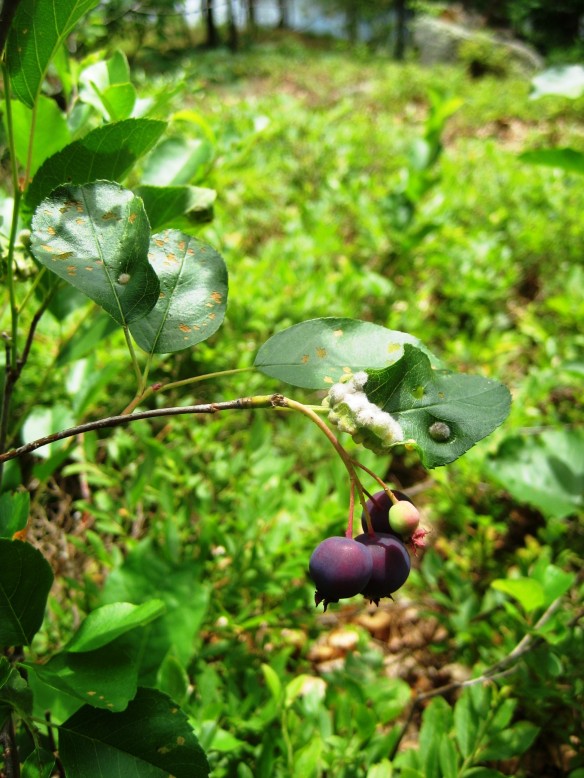In the area of the Kawarthas where I usually hike, Wild Strawberries are a very rare delicacy. I am lucky to find 1 every year! Well, this past weekend, amongst all of the other abundant edibles, I was lucky enough to find a single Wild Strawberry bearing fruit.
This plant, a member of the Rose family, tends to grow to 3-5 inches. Its 3 leaves are coarsely toothed with hairy stalks. There are two varieties, the Common Strawberry
and the Woodland Strawberry, Fragaria virginiana and Fragaria vesca respectively. If you care to distinguish them, you can do so by their fruit and the tooth at the end of the leaves.
The Common Strawberry has seeds that rest in little pits on the surface, and the tooth at the end of their leaves is shorter than those on either side. The Woodland Strawberry,
by contrast, has seeds that sit slightly raised on the fruit’s surface, and the tooth at the end of their leaves are slightly longer than the teeth on either side.
The fruit are tiny compared to domestic Strawberries, but they taste much better! Adding to its taste, at least for me, is the fact that I’ve had to work to find one, and since I find them so seldomly where I hike and camp, I eat it mindfully, savouring it for as long as its flavour will last.
Here are two great resources to bring on your hikes to help you with plant identification:
• Forest Plants of Central Ontario; Lone Pine Publishing
• Peterson Field Guides – Edible Wild Plants, Eastern/Central North America
As with any wild plant:
• harvest/consume only those that you can identify positively
• when in doubt ask an expert in the area
• Learn to distinguish from any similar poisonous plant (if applicable)
• Sample sparingly at first to gauge individual sensitivities/allergies
• Understand which parts of which plants may be consumed as many edible plants have toxic parts/structures
• Harvest only when/where abundant
• Do not harvest plants that are endangered or in need of protection
Happy Trails!













You must be logged in to post a comment.